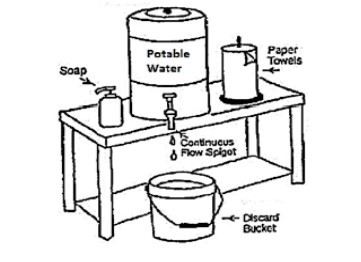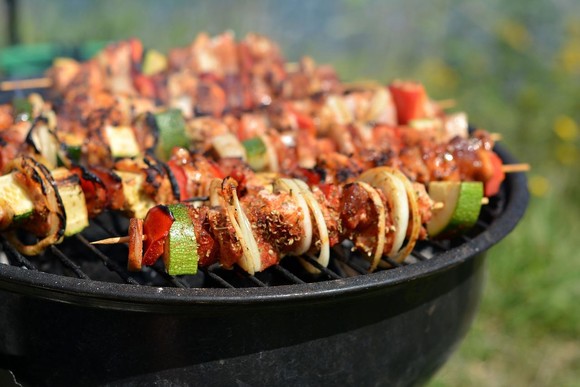|
August 26, 2022
In this issue
Business owners across industries are responding to the latest market upheaval this summer as commodity prices have soared. A combination of inflation and rising commodity prices are pinching margins during the busy season for many businesses. Despite the rising costs industry professionals have found flexible solutions and relied on resources to succeed.
Consumer prices have gone up 8.6 percent over all commodities over the last 12 months according to the U.S. Bureau of Labor Statistics. Among those goods are two especially suffering sticker shock – food and energy. Food prices are up 10.1 percent year over which is the first double digit increase since 1981. Energy costs including gasoline, natural gas and electricity have risen an average of 34.6 percent.
The severity in rising costs over the last few months, especially to fuel, was hard to predict said Matt Selman, a property manager for a pool management company Go Get Fred. “We’ve got a fleet of cars averaging 50 to 60 miles a day. We do our best; our routes were already set up in the most efficient way. We try to limit the amount of back and forth.” Selman said. “You try to look ahead, plan and be flexible. If you don’t adapt you go the way of the dodo bird.”
The stress on industries that serve the public hasn’t gone unappreciated. According to a recent Gallup poll people are placing more faith in small businesses than any other institution. When asked to rate confidence customers across demographics ranked their local entrepreneurs above all others.
Business leaders have offered a myriad of approaches to solve margins getting pinched. Techniques to consider are:
- Communicate with suppliers to negotiate prices and find alternative products
- Incentivizing customers to pay with cash instead of cards and reducing credit card purchases for equipment
- Focusing on reducing energy costs and utilizing Energy Star savings
- Utilizing an accountant or opening books to trusted colleagues to find waste in finances
- Adjusting offerings and services after a profit-margin analysis
- Increasing prices
A number of resources are available for business owners to maximize their business. The Small Business Association (www.sba.gov) offers programs such as the Emerging Leaders Initiative for those that have been in business at least three years and have annual revenues of $250,000 or more. They also host small business development centers to get in-person individualized assistance.
Energy Star is a program to assist in lowering energy bills and according to the Environmental Protection Agency saved small business and consumers approximately 31 billion dollars in 2021. They provide a free action workbook to begin focusing on lowering energy bills here: ENERGY STAR Action Workbook for Small Business | ENERGY STAR
The US Chamber of Commerce has also focused on finding free resources for business owners to thrive during a difficult time. Additionally, the Chamber of Commerce has a Minnesota faction dedicated to helping local companies grow. Thy have released a list of ten free resources to assist: 10 Free Resources for Small Businesses to Leverage Year-Round (uschamber.com).
 After enduring our long Minnesota winter (and 2 years of COVID-19 precautions) we are all ready to make the most of the brief Minnesota summer! And there’s nothing like enjoying a great meal outdoors. Whether it’s a family picnic, neighborhood potluck, or community food festival, food just tastes better when it’s served up outside! Unfortunately, the summer cooking season does have a downside; buffets or picnics can be a means to transmit illness among your guests if key food safety measures aren’t utilized. Preparing and serving food outside on hot summer days requires a little extra planning as harmful bacteria grow more quickly in warm, humid conditions. To keep food as safe as possible in the heat, here are some key tips.
Plan:
- Bring only the amount of food that will be eaten at the event to avoid leftovers.
- Use more shelf-stable foods to increase food safety and decrease the number of refrigerators/coolers required.
- Wash all produce at home before bringing to an event.
- Bring plenty of clean serving platters, utensils and/or a supply of disposable items if dishwashing isn’t available.
- Replace empty platters of food rather than adding fresh food to a serving dish that already had food in it.
- Bring an abundant supply of bottled water or potable tap water if water is not available onsite.
- Create your own handwash station next to your outdoor kitchen! Grab any big beverage container with a “handsfree” spigot, fill the container with potable water, pair that with a drip bucket, pump hand soap, paper towels, and a wastebasket for towel trash - you’re all set!!!
- Check in with your family members, volunteers, or anyone attending the event. Has anyone been sick recently? Is anyone having “stomach issues”? If so, they should not be handling or cooking food!
Separate:
- Keep raw animal proteins separate from any cooked foods and/or produce meant to be eaten raw.
- Keep raw animal proteins separate from everything else throughout the storage and prep process - in your shopping cart, cooler, car, counter, and refrigerator.
- Use separate cutting boards for raw animal proteins and produce; purchase ones that are easily cleanable (not made of wood!). There are many reasonably priced choices; use color-coded boards (red for beef, green for produce, etc.) or a permanent marker to write on them so they don’t get mixed up.
- Pack foods in waterproof containers with tight-fitting lids to prevent juices from the raw products from contaminating other foods.
- Prevent cross-contamination by using separate platters and utensils for raw and cooked animal proteins – e.g., Don’t reuse the same platter for the raw beef for the cooked burgers.
- Reserve a supply of ice and/or marinade for use on salads or cooked foods instead of re-using anything that has already been in contact with raw animal foods.
Chill:
- Marinate food in the refrigerator and keep perishable foods cold until you’re ready to cook (below 41°F); this includes transport time!
- Keep separate coolers for food and beverages so you don’t have to open the food cooler every time someone wants a beverage.
- Use a cooler filled with ice or freezer packs for traveling with perishable food; a full cooler stays colder longer than a partially filled one.
- Store coolers in a shady spot or covered with a light-colored blanket.
- **Remember!!** Refrigeration only slows the growth of bacteria and other microbes, it doesn’t kill or stop growth entirely; so even if the food gets only slightly warmer, the germs are happier and growth speeds up.
Clean:
- Wash hands, surfaces, and utensils often!
- Keep food storage, prep, and cooking spaces clean and keep yourself clean too!
- Scrub up thoroughly (and maybe even change your clothes) after wrestling the dog, playing with the cat, or working in the garden before beginning any food preparation.
- Wash the grill and utensils prior to cooking; there are many food-safe products available to safely clean your grill (as well as simple mixtures of vinegar and baking soda).
- Replace any wire grill brushes with scrubbies made of hard plastic or other similar material; the wire bristles frequently break off and cause serious harm and/or internal injuries when swallowed (CDC reference).

Wash:
- Wash Your Hands! Wash your hands frequently and thoroughly for at least 20 seconds.
- Wash your hands after coughing, sneezing, using a tissue, eating, smoking, petting dogs (or handling any other animals).
- Wash your hands after touching hair, skin, face, and always after using the bathroom!
- Wash your wrists too and don’t forget to scrub in between fingers and under nails.
- Hand sanitizer is not a replacement for handwashing! Hand sanitizer cannot remove dirt, soils, or organic matter (it just spreads it around).
|
 Cook:
-
Cook foods to the correct temperature and use a thin-probed food thermometer (instant read) to confirm internal temps; color is not an accurate indicator of doneness!
- Use the chart below from the United States Department of Agriculture (USDA).
- Keep hot foods hot until served!
- Keep food hot on the grill or use a warm oven, a chafing dish, or electric roasting pans to maintain temperatures >140°F.
|
Product
|
Minimum internal temperature
|
|
Fully cooked ham, hot dogs, or brats (commercially processed precooked product; reheating)
|
140 °F (57.2 °C)
|
|
Beef, corned beef, pork, veal & lamb (steaks, roasts, chops)
|
145 °F (62.8 °C); rest 3 minutes
|
|
Fish & shellfish
|
145 °F (62.8 °C)
|
|
Ground meats (beef, pork, lamb) & uncooked sausages (hotdogs, brats)
|
160 °F (71.1 °C)
|
|
Product
|
Minimum internal temperature
|
|
All poultry (whole bird, breasts, legs, thighs, wings, ground poultry, giblets, and stuffing) – chicken, turkey, duck, & goose
|
165 °F (73.9 °C)
|
|
Eggs
|
160 °F (71.1 °C)
|
|
Casseroles & “Leftovers” (cooking for the first time OR reheating)
|
165 (73.9 °C)
|
Surplus:
- Place any uneaten food in the refrigerator, freezer, or garbage as soon as you’re done eating or after 2 hours (whichever comes first).
-
Bacillus cereus loves potato salad just as much as you do! Don’t leave uneaten food outside, on tables, etc. any longer than 2 hours.
- In hot weather (>90°F), food should never be left out longer than 1 hour!
On July 1, 2022, Minnesota law (MS 151.72) pertaining to the sale of certain products derived from hemp changed to allow for the sale and processing of goods known as edible cannabinoid product (ECP). An ECP is not considered a food or drug though it is meant for human consumption. In addition, a food license is not required to make or sell an ECP. The Minnesota Board of Pharmacy has authority over ECPs.
For consumer health and safety, the Hemp Derived Edible Cannabinoid Product Guidance for Food Operators was developed to:
- Inform food business operators about requirements for making and selling an ECP,
- Provide guidance on protecting the safety of food ingredients used to make an ECP, and to
- Provide information on protecting food that is within the jurisdiction of food licensing agencies.
You may visit the following links for more specific information about hemp derived ECP.
- General environmental health
- Basic food safety classes
- Temporary food stand licensing
- Food license information, categories, and fee schedule
- New construction or remodeling application
Radon information and test kits
hennepin.us/radon
Septic system requirements and procedures
hennepin.us/septic
Body art licensing information (tattooing and piercing)
hennepin.us/bodyart
Beaches in Hennepin County
hennepin.us/beaches
Public swimming pool regulations
hennepin.us/pools
About us
Food Digest is a quarterly newsletter written by inspectors from Hennepin
County Public Health Department, and designed to support and educate Hennepin County food facility owners and operators. Articles focus on food
safety and requirements from the Minnesota Food Code and Hennepin County food ordinance.
Location
1011 First Street S, Suite 215
Hopkins, MN 55343-9413
8 a.m. to 4:30 p.m.
612-543-5200
hennepin.us/envhealth
Past issues
Previous issues of Food digest available in our archive.
|